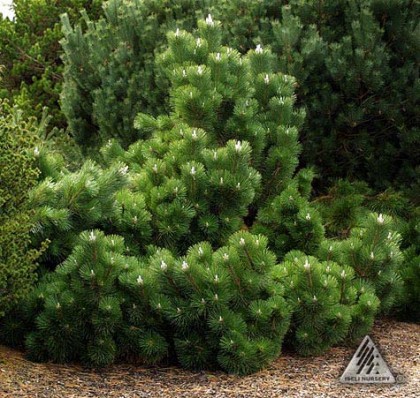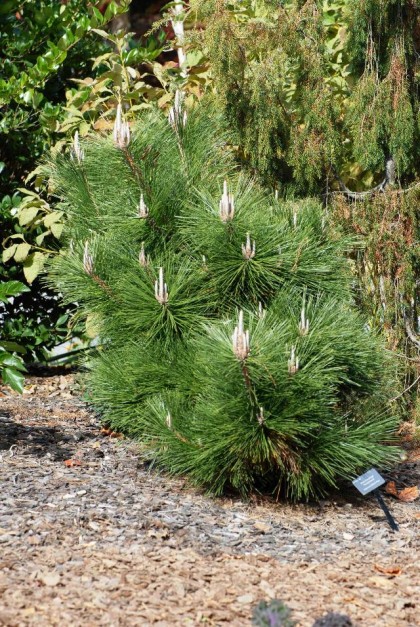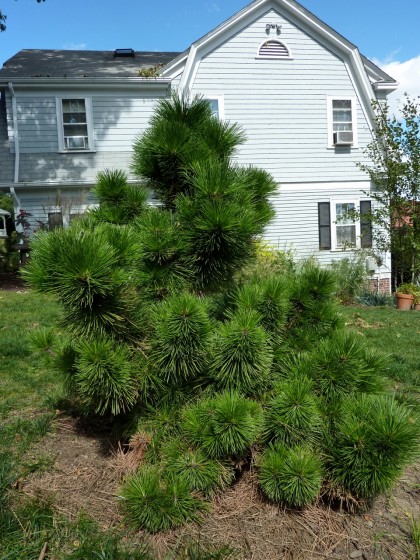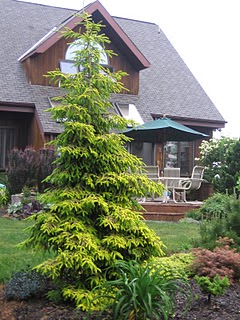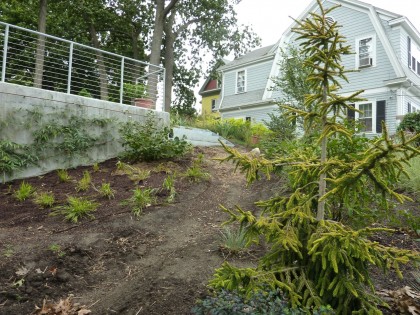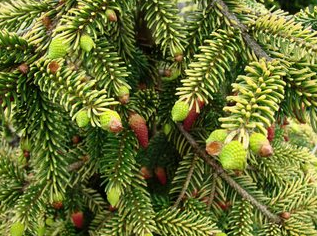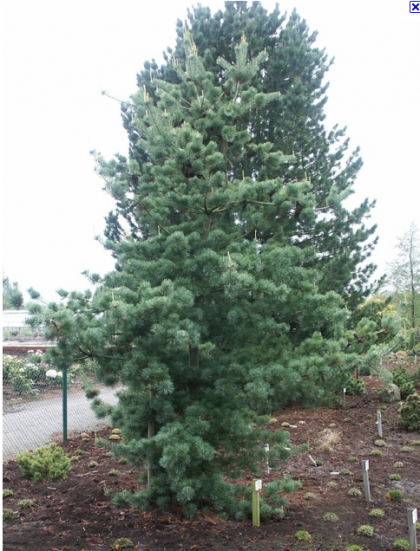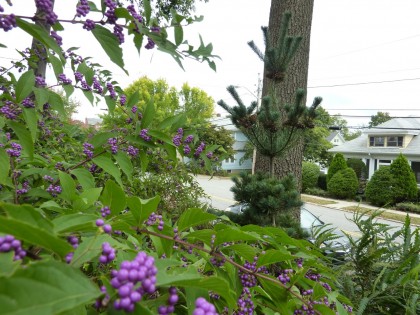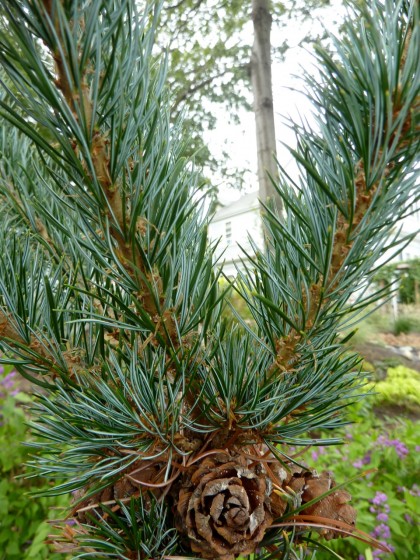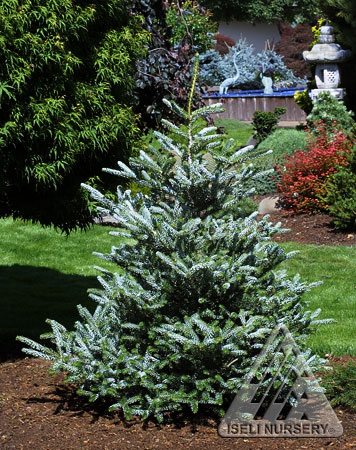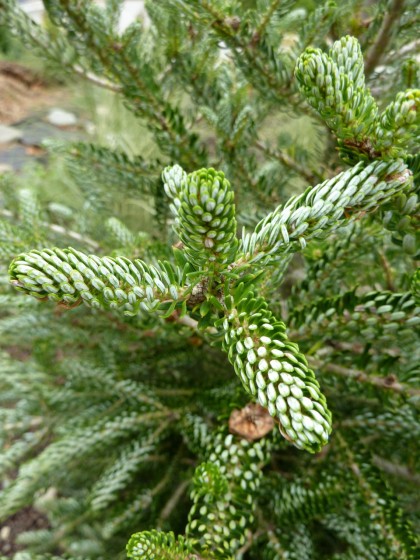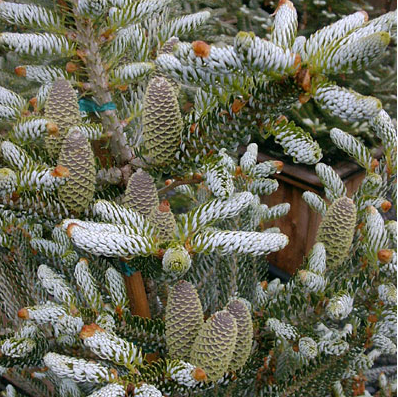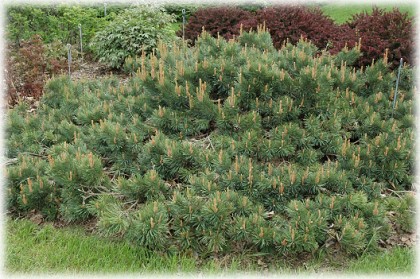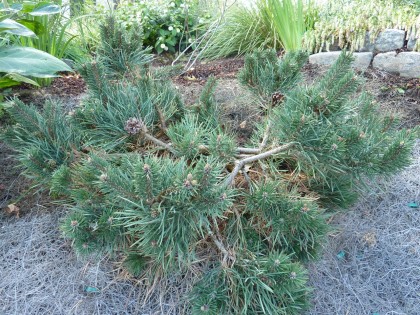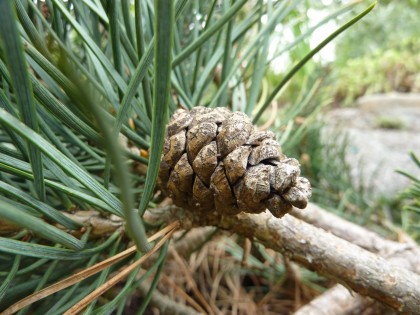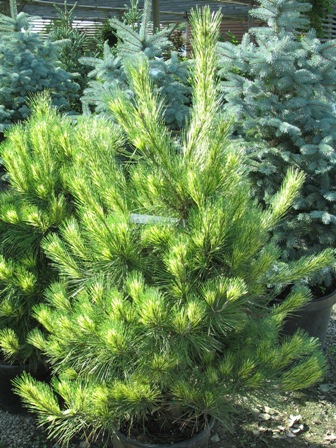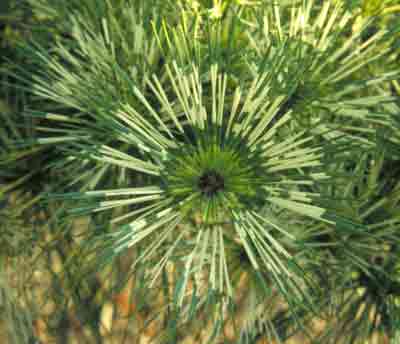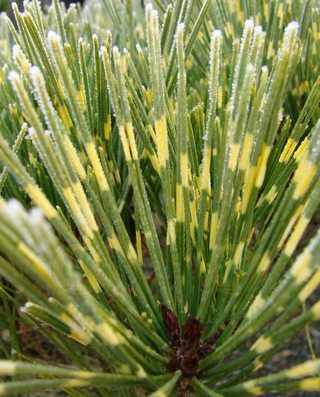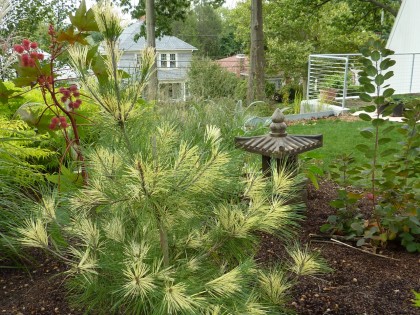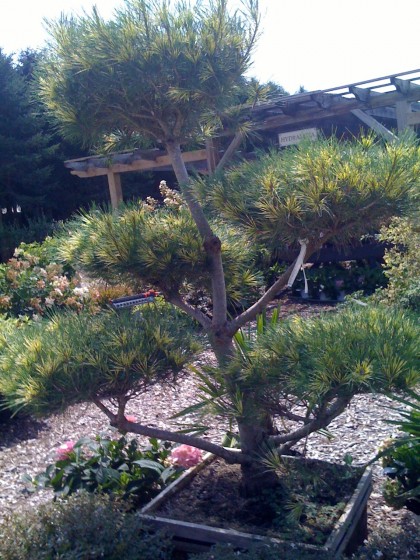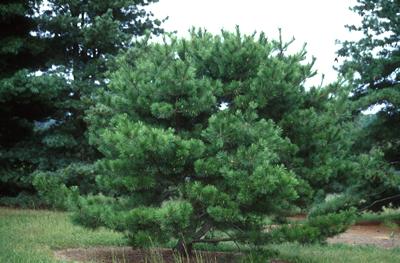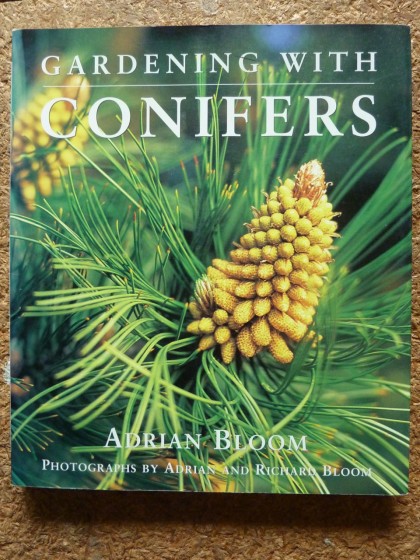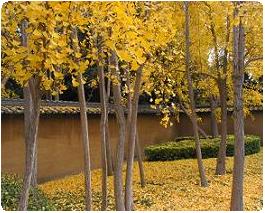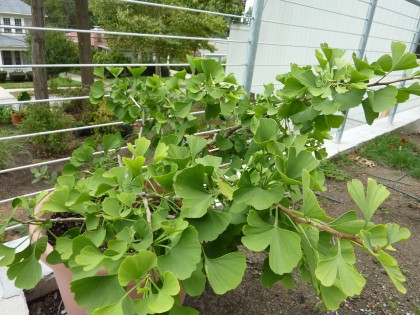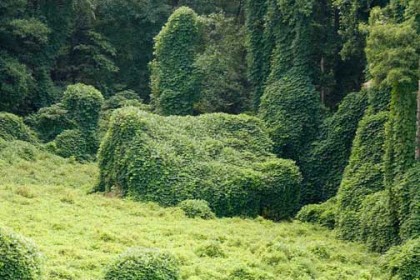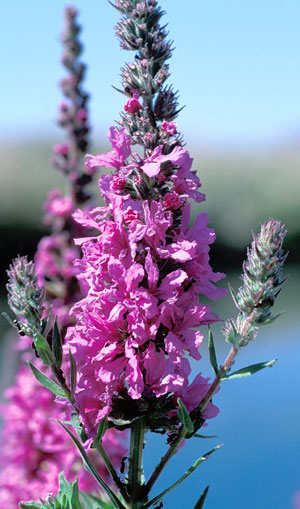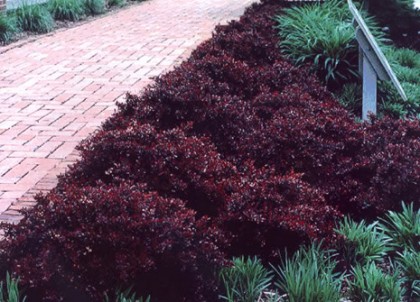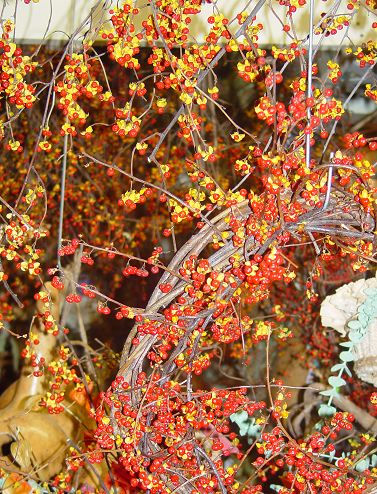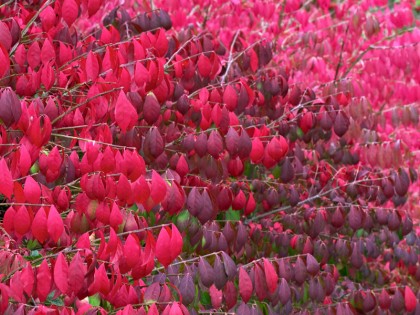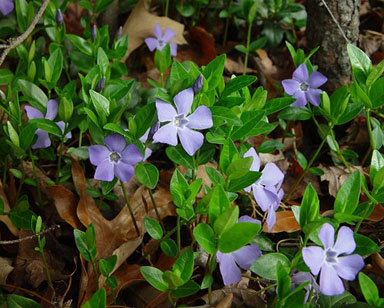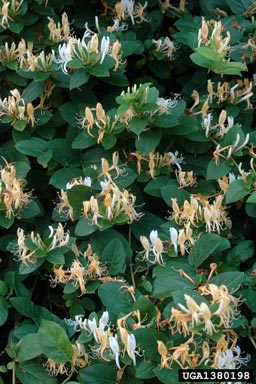The next installment in my ongoing cataloging of plantage: Conifers! O how do I love thee, gymnosperm? I love thine evergreeniness. I love thee for anchoring my garden and for your amazing foresty scent. I love thee as living sculpture — particularly thee irregularly shaped cultivars.
So far I’ve planted seven carefully curated conifers around the yard. Each was chosen for various reasons, including a tendency not to grow to towering heights and block all my sun. Here goes…
Pinus thunbergii ‘Thunderhead’ (Dwarf Japanese Thunderhead Black Pine)…
The Thunderhead is next to our yet-to-exist fish pond, positioned for prime viewing from our yet-to-exist window wall. I like to get a headstart. We love this tree. Bix has dubbed him Teddy, because he looks so huggable. In the spring its cones stick up like candles. Although it also looks like the tree is flipping you the bird…
Here’s our Teddy, picked up at Briggs Nursery in Attleboro, Mass. Such a cutie…
I just want to pinch his widdle cheeks every time I see him. More on the Thunderhead here.
Picea orientalis ‘Skylands’ (Yellow Oriental Spruce)…
Color. I crave it, especially in winter. For the warm season, I wanted a jolt of brightness on the way up the path to lead the eye up to my blindingly chartreuse Tiger Eye sumacs (Rhus typhina ‘Bailtiger’, more on those another time). The Skylands Oriental spruce was a no-brainer…
Not a sunny day here in Providence, as you can see. But the Skylands I drove all the way to Estabrook’s in Yarmouth, Maine, to retrieve, shines like the sun — as do the sumacs at the top of the hill. Click to biggify and you can spot my new Silberlocke fir right in front of the stairs. More on the fir below. [On the left: Shasta viburnum (Viburnum plicatum f. tomentosum ‘Shasta’), ‘Beni Kaze’ Japanese Forest Grass (Hakonechloa macra ‘Beni Kaze’) and a bamboo-like bramble called Rubus henryi bambusoides on the trellis.]
Skylands bonus: hot pink-reddish cones at the tips of the branches in the spring just add to the disco. Can’t wait to put my dancypants on when these appear…
For a biggified shot of Skyland’s brilliance, click the top image here.
Pinus parviflora ‘Tempelhof’ (Japanese ‘Tempelhof’ White Pine)…
From hereon out to be referred to as “The Hof.” Blue. I really wanted a burst of it behind my three Purple beautyberries (Callicarpa dichotoma), and now I have it…
Found Hof at Briggs. Just take a look at how cool his needles are…
I saw a nuthatch pecking away at his pinecones yesterday. That makes me happy.
Abies koreana ‘Horstmann’s Silberlocke’ (Korean Fir ‘Horstmann’s Silberlocke’)…
A bit of silvery blue, positioned further up the path past the blue Hof and the golden Skylands. The Silberlocke fir has unique needles that curl up to reveal silver undersides. Here’s a shot of ours…
In early summer, the cones are the craziest shade of blueish-purple you’ve ever seen. These don’t quite capture it…
In my growing conifer museum, I think Silberlocke will be one of my favorites. Found this one at Esposito’s Nursery in Cohasset, Mass.
Pinus sylvestris ‘Albyn Prostrata’ (Albyn Prostrate Scotch Pine)…
I needed a low spreader to hold a small slope above what I’m calling “The Desert Room,” planted with some of my more drought-tolerant plants. This pine is perfect for that. Stays low but spreads out. I like it’s blue cast. Give it a few years and mine should take over this slope…
Picked this baby up at The Farmer’s Daughter in Wakefield, RI. Nice selection of conifers there, especially rock garden specimens. I should mention that this Scotch pine has really cute pine cones and makes the lower part of the garden smell fantastic…
Pinus densiflora ‘Oculus Draconis’ (Japanese ‘Dragon’s Eye’ Red Pine)…
Not a pine you see often. Or ever. Dragon’s Eye should look awesome against a snowy landscape — and in the years to come, its trunk gets twisted and gnarled. Just look at those needles!
See the eye? It sees you. I just love those yellow bands…
Here’s our little Dragon’s Eye lighting up the far corner of the yard…
[Dragon’s Eye flanked by Castor Bean (Rincus communis) and ‘Royal Purple’ smokebush (Cotinus coggygria ‘Royal Purple’)]
At The Farmer’s Daughter, where I picked my Dragon’s Eye, they had a crazy tall one carved into a bonsai…
Impressive but we’ll be keepin’ it real with our tree. True to its breed, Japanese red pine is supposed to create an excellent windbreak as its tendency is to spread out horizontally like so…
… which is another reason I put it on the north side of our yard. Let’s hope it grows to fulfill its potential. As with all of us.
Before I finish up here, I’d like to say I couldn’t have done my research without the aid of Gardening With Conifers by Adrian Bloom. Excellent resource. Here’s a little something I bet you didn’t know that I picked up from Bloom’s book: the gingko biloba is a conifer. Yes, the gingko!
I wish I had room for a big statement-making gingko but no. Luckily, dwarf cultivars have been introduced in recent years, one of which I picked up at The Farmer’s Daughter. Bound to a pot for the last few years, my Ginkgo ‘Jade Butterflies’ is starting to get root-bound. Now that it’s fall, it should be yellowing up soon…
The male trees don’t fruit, so no stinko in this ginkgo. The moment our new patio is poured and all likelihood of trampling has passed, I’m putting this guy in the ground.
On that note, I take my leave. Carry on.
